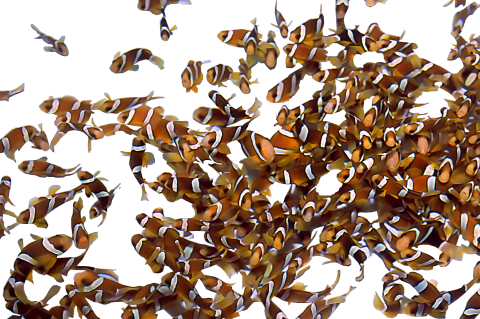X-Ray Mag #21
Tawali on Papua New Guinea is narrated by Andrey Bizyukin and supplemented with photographs by Wulf Koehler. In the Mediterranean we visit the island of Elba. Leigh Cunningham takes us into a cave under Ras Muhammad (Egyptian Red Sea). Now where things are heating up, learn what Temperature really means. Or what goes on with Sex on the reef. No February issue without Valentines' gifts. We interview Richard Pyle about ecology, rebreathers, Pyle stops and being a nerd.
Main features in this issue include:
A Stretcher In Deep Water
That’s it! We managed to take a stretcher to a depth of 54 meters and a total distance of more than 450 meters. What a human and technical achievement!
At the same time, we had to observe the rules set forth by the Spéléo Secours Français—the French Cave Diving Association. We set up a trimix dive, with nitrox decompression and oxygen.
A talk with Richard Pyle
Biologist, rebreather diver, inventor of Pyle Stops or... database manage. X-RAY MAG catches up with the ever-inventive and contemplative pioneer, Richard Pyle, to find out what makes him tick, insights into his theories, and the stories behind his accomplishments.
Who is Richard Pyle really? A biologist or a rebreather diver?
Environmental Awareness for Photographers
It is sad, but true—underwater photographers do not have a good track record or reputation for behaving well in nature. But being environmentally aware and conscientious about conservation issues should be as much part of the preparations as loading the camera with a memory card and fresh batteries.
The underlying fundamentals for underwater photography is mastering the basics of diving. In order to obtain good photographs, it is paramount to be able to control buoyancy.
Sidemounts - A matter of Convenience
It has been a year now since I started to exclusively side-mount the off-board tanks of my rebreather—either a Megalodon CCR or an Evolution CCR. Why? Simply because it’s much more convenient!
Open Circuit
Temperature
We have previously looked at the various properties of water which have an effect on aquatic fauna, some of them a bit out of the ordinary, such as surface tension. However, one of the most important
As pure water is only a liquid between 0ºC and 100ºC, it is not surprising that life, at least as we know it, which depends on water, is to be found on earth where this condition obtains, though most life on Earth lives at temperatures of less than about 50ºC.
They are all Transsexuals
The popular anemone fishes are mostly known for their symbiosis with giant sea anemones, their interesting behaviour, and beautiful colours. But they also have another lesser known but interesting side to their lives: Their life cycles includes transsexual ‘stunts’
In the early part of their life cycles, after some days out in the blue as pelagic larvae, anemone fishes settle on the coral reef once they find a suitable host sea anemone. Usually, there are a small group of anemone fishes in one large sea anemone.








